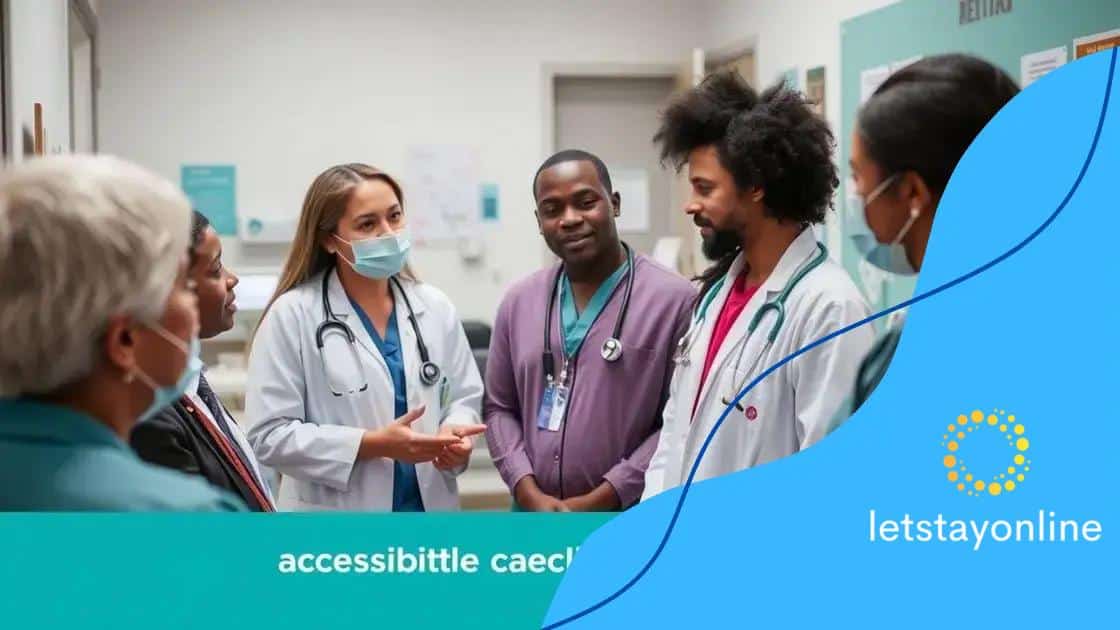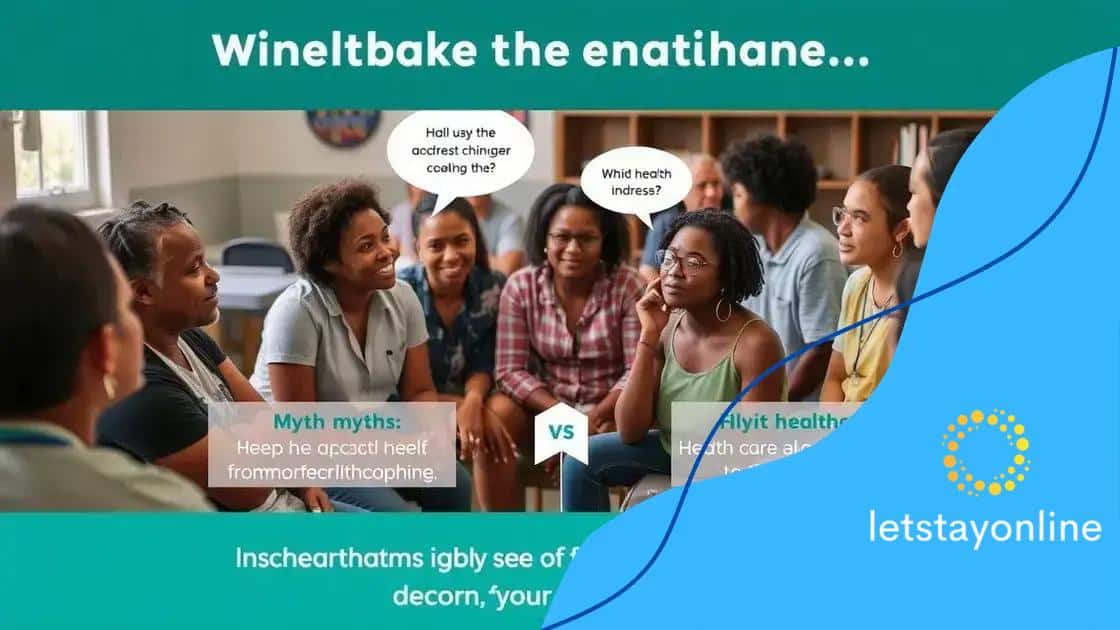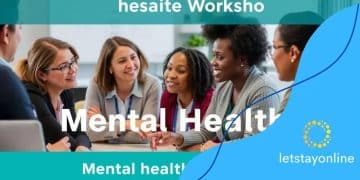How to access free healthcare services for low-income families

Free healthcare services for low-income families include preventive care, emergency services, and mental health support, accessible through local health departments, community health centers, and various nonprofit organizations.
How to access free healthcare services for low-income families is a question many might ask. Navigating the healthcare system can feel overwhelming, but there are resources available to help. Let’s explore how you can ensure your family receives the care they need.
Understanding eligibility for free healthcare
Understanding eligibility for free healthcare is essential for families seeking medical assistance. There are various factors that determine if you qualify for these services. Knowing the eligibility requirements can significantly help you access the healthcare your family needs.
Who Qualifies?
Eligibility typically depends on income, family size, and sometimes specific circumstances like disabilities. Families with lower incomes often have the best access to free healthcare services. This means that if your income is below a certain level, you might qualify.
Key Factors to Consider
- Income levels compared to the federal poverty line
- Family size and composition
- Residing in a state with expanded Medicaid options
- Other specific criteria based on age or health status
If you think you might be eligible, take the step forward to check your qualifications. Many organizations provide assistance to help families navigate the process. For instance, local community health centers often offer resources and may assist you with applications.
It’s important to keep in mind that eligibility can vary by location. Each state may have different regulations, and understanding these can help you know what programs are available for low-income families. You should reach out to local health departments or nonprofit organizations that can offer guidance.
Resources for Checking Eligibility
Several online resources can help determine if you qualify for free healthcare services. Consider using:
- Your state’s official health department website
- Healthcare.gov for federal programs
- Nonprofit organizations that specialize in healthcare access
With the right tools and knowledge, navigating the eligibility process for free healthcare can be straightforward. Being informed is key to ensuring your family receives the care they are entitled to.
Available services for low-income families

Many services are available to support low-income families in accessing essential healthcare. These services cater to a variety of health needs, ensuring that no one is left behind due to financial constraints. Knowing what options exist is crucial for families to receive the care they deserve.
Types of Available Services
Families can access different types of healthcare services depending on their needs. These might include preventive care, emergency services, and therapy for mental health issues. Each type helps meet the diverse healthcare requirements of low-income households.
Preventive Care Services
- Routine check-ups and vaccinations
- Screenings for common illnesses
- Nutritional counseling and education
- Access to health education workshops
Preventive care is vital as it helps families stay healthy before issues arise. Being proactive about health can lead to fewer emergencies and lower overall healthcare costs in the long run. Many local clinics offer these services free or at reduced rates to those in need.
Emergency and Urgent Care Services
In addition to preventive services, low-income families can access emergency and urgent care services without worrying about high fees. Understanding your options for pain relief, injury treatment, and emergency responses is essential. Many hospitals provide sliding scale fees based on income, ensuring more families can afford necessary care.
Mental Health Services
Accessing mental health services is equally important. Counseling and support groups are crucial for families navigating stress, anxiety, or family issues. There are many programs aimed at helping individuals cope effectively. These services can also be found on a sliding scale or free basis at local community centers.
Overall, the variety of available services ensures that low-income families can find the help they need, enabling them to focus on their well-being without added financial stress. Remember, it’s essential to ask about eligibility and any documentation needed to receive these services.
How to apply for free healthcare
Applying for free healthcare might seem daunting, but understanding the process can make it easier for low-income families. Knowing the steps to take ensures you can get the help you need without added stress. Let’s break it down into manageable parts.
Gather Necessary Documents
The first step is to collect all the required documents. These typically include proof of income, identification, and proof of residency. Having these ready can streamline the process significantly.
- Pay stubs or tax returns to verify income
- Government-issued ID for identification
- Utility bills or rental agreements for residency proof
Once you have these documents, you can move on to the next steps in the application process. It’s important to ensure that all information is accurate to avoid delays.
Find the Right Program
There are various programs available depending on your location. Researching which ones fit your family’s needs is key. Many state and local health departments offer assistance programs targeted at low-income families.
Submit Your Application
After selecting the right program, fill out the application thoroughly. You can often find applications online or in local health centers. Completing it accurately is essential. After submission, keep a copy for your records to refer back to if needed.
Some programs allow you to apply online, while others may require you to visit an office. If you need help completing the application, don’t hesitate to ask for assistance. Many community organizations offer support in navigating the application process.
Follow Up
After applying, it’s essential to follow up on your application status. This can be done through the program’s contact information provided during your application. Don’t be afraid to reach out and ask about your application. Keeping in communication shows your eagerness to get the necessary healthcare.
Being diligent about your application process can lead to successfully accessing free healthcare services. Each step brings you closer to securing the healthcare your family needs.
Common misconceptions about free healthcare

Many people hold common misconceptions about free healthcare that can create barriers to access. Understanding the facts can help clear up confusion and encourage families to seek the services they need. Let’s explore some of these myths and the truths behind them.
Myth 1: Free Healthcare Means Poor Quality
One major misconception is that free healthcare lacks quality. In reality, many clinics and programs providing free services maintain high standards of care. They are often staffed by qualified medical professionals dedicated to serving the community. Accessing free healthcare does not mean sacrificing quality.
Myth 2: You Have to Pay Hidden Fees
Some families worry about unexpected costs when using free healthcare services. While it’s true that certain services may require payment, many programs emphasize transparency and inform participants upfront about any potential fees. Understanding the terms can help avoid surprises.
Myth 3: Only Certain Groups Qualify
Another common belief is that only specific populations can access free healthcare. In fact, various programs cater to many families, including low-income households, individuals facing job loss, and even those in temporary financial distress. Eligibility criteria often vary, so it’s essential to inquire about the specific program to determine if you qualify.
Myth 4: It Takes Too Long to Get Service
Some might think that receiving care through free healthcare programs involves long waiting times. While there may be some delays, many organizations strive to provide timely service. It’s common for healthcare providers to prioritize urgent cases, ensuring that individuals receive the care they need as quickly as possible.
Dispelling these misconceptions can empower low-income families to seek the health services they are entitled to. By understanding the truths behind these myths, families can access necessary medical care without fear or misunderstanding.
Resources for finding local services
Finding local services for free healthcare can be easier than you think. Several resources are available to help low-income families connect with the right programs. Knowing where to look can make all the difference in accessing essential healthcare.
Online Resources
The internet offers a wealth of information for families seeking healthcare services. Websites like Healthcare.gov allow you to explore available programs and services tailored to your needs. These platforms often provide links to local health departments and community resources.
Community Health Centers
Community health centers play a vital role in providing care to low-income families. They offer services at reduced costs and often have staff who can guide you through the application process. You can find a health center near you by visiting the HRSA website, which offers a searchable database.
Nonprofit Organizations
Many nonprofit organizations focus on healthcare access for low-income individuals. Organizations like United Way and Planned Parenthood provide information about local resources, services offered, and how to apply. They often have advocates who can help families understand their options and navigate the healthcare system.
Local Health Departments
Your local health department is another valuable resource. They can provide guidance on the healthcare programs available in your area. Many health departments run programs specifically designed for low-income families that include screenings, immunizations, and wellness checks.
By using these resources, families can feel empowered to seek out the healthcare services they need. Whether it’s through online platforms, community centers, or local government offices, help is readily available. Knowing where to turn can make the healthcare journey much smoother for everyone.
FAQ – Questions About Accessing Free Healthcare Services
What services are available for low-income families?
Low-income families can access preventive care, emergency services, and mental health support through various community and nonprofit programs.
How can I find local healthcare resources?
You can find local services through websites like Healthcare.gov, community health centers, and local health departments.
Are there any costs associated with free healthcare?
While services are typically free, some programs may have minimal fees. It’s best to check with each program for transparency.
How can I apply for free healthcare services?
To apply, gather necessary documents like proof of income and residency, then submit your application to the relevant local programs.






